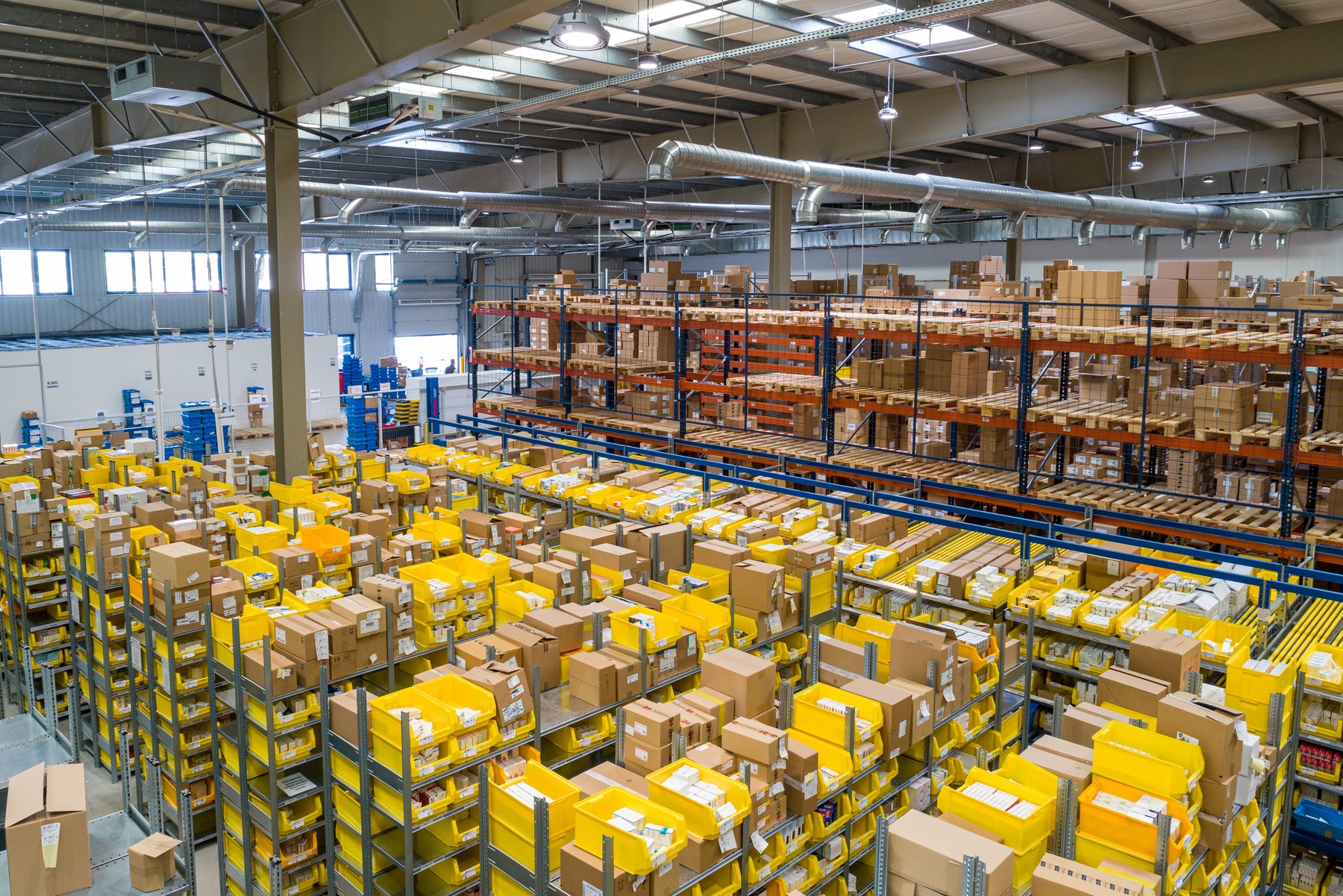
Material Handling Equipment in Warehouses: Enhancing Efficiency and Productivity
Introduction:
In today's fast-paced world of logistics and supply chain management, efficient and effective material handling is crucial for the success of any warehouse operation. With the rise of e-commerce and the increasing demand for quick order fulfillment, warehouses are constantly seeking ways to optimize their operations. One key aspect of this optimization is the effective utilization of material handling equipment. In this blog post, we will delve into the world of material handling equipment in warehouses, exploring the different types of warehouse equipment used in modern warehouses, their benefits, and the impact they have on overall efficiency and productivity.
The Importance of Material Handling Equipment:
Material handling equipment (MHE) plays a pivotal role in improving productivity, reducing labor costs, minimizing errors, and ensuring worker safety. By minimizing manual labor and automating certain tasks, this equipment significantly enhances efficiency and productivity. They also reduce the risk of accidents and injuries, ensuring a safer working environment.
Types of Material Handling Equipment:
Forklifts: Forklifts are versatile, powered industrial trucks commonly used for lifting, stacking, and moving heavy loads. With various types available, including counterbalance, reach trucks, and pallet jacks, forklifts are adaptable to different warehouse layouts and material handling needs. Forklifts are especially useful for stacking and retrieving pallets from high racks, thus maximizing vertical space utilization.

Image 02 – Forklift
Image Credits: Images from Pixabay by OpenClipart-Vectors : https://pixabay.com/vectors/box-car-forklift-loader-vehicle-159302/
Platform Trolleys: A platform trolley is a practical and versatile material handling tool used in warehouse operations. Platform trolley eliminates the need for manual lifting and carrying, reducing the risk of workplace injuries and improving productivity. The material handling trolley's compact size and maneuverability make it ideal for navigating narrow aisles and congested areas, optimizing space utilization in the warehouse. With its durability and cost-effectiveness, the platform trolley is an invaluable asset that simplifies material handling processes, enhances efficiency, and contributes to a well-organized warehouse environment.
Conveyor Systems: Conveyor systems are automated mechanical devices used to transport materials from one point to another within a warehouse. Conveyor systems consist of a network of belts, rollers, or chains that transport goods between different areas of the warehouse. Material handling equipment, the conveyor system eliminates the need for manual carrying and can handle both small and large items efficiently. They offer continuous and efficient movement of goods, reducing manual handling and minimizing the risk of damage. Examples include roller conveyors, belt conveyors, and gravity conveyors. Conveyor systems are particularly beneficial in high-volume operations, reducing labor costs and accelerating order fulfillment.

Image 04 - Conveyor System
Image Credits: Images from pixabay by falco : https://pixabay.com/photos/factory-plant-industrial-hall-1137993/
Pallet Jacks: Pallet jacks, also known as pallet trucks, are manual or electrically powered devices used for moving palletized loads within a warehouse. Pallet truck maximizes vertical space utilization, enabling easy access and retrieval of items. Various rack types, such as selective racks, drive-in racks, and push-back racks, cater to different storage requirements and inventory turnover rates. Pallet jacks are ideal for short-distance transport and are easy to maneuver in tight spaces. Pallet jacks come in different types, including standard, low-profile, and narrow aisle, catering to specific warehouse layouts.
Image 05 - Pallet Jack
Images Credits: Images from Pexels by Tiger Lily: https://www.pexels.com/photo/men-working-in-factory-warehouse-4483772/
Automated Guided Vehicles (AGVs): AGVs are robotic vehicles that navigate through the warehouse autonomously, guided by embedded sensors, magnets, or lasers. They can transport goods, pick up and drop off pallets, and even interact with other equipment. AGVs are highly efficient, adaptable, and can be programmed to work in conjunction with other machinery, optimizing workflow and reducing human intervention.

Image 06 - Automated Guided Vehicles (AGVs)
Images Credits: <a href="https://www.freepik.com/free-photo/robot-arm-picks-up-box-autonomous_18321474.htm#query=automated%20guided%20vehicles&position=1&from_view=search&track=ais&uuid=51603d1a-8df3-4a12-b0b7-e9d614a6eb1a">Image by user6702303</a> on Freepik
Racking and Shelving Systems: Racking and shelving systems are essential for organized storage and efficient space utilization. These systems include selective pallet racks, drive-in racks, push-back racks, and mezzanine shelving. By providing easy access to stored items and optimizing vertical space, these systems contribute to faster retrieval and replenishment processes.

Image 07 - Racking and Shelving Systems
Image Credits: Images from unsplash by Ruchindra Gunasekara: https://unsplash.com/photos/GK8x_XCcDZg
Benefits of Material Handling Equipment:
Increased Productivity: By automating tasks and reducing manual labor, material handling equipment accelerates the pace of operations, leading to higher productivity and throughput. This allows warehouses to handle larger volumes of goods and fulfill orders more efficiently.
Improved Safety: Material handling equipment helps minimize the risk of workplace accidents and injuries. It eliminates the need for employees to lift heavy loads manually, reducing strain and potential musculoskeletal injuries. Furthermore, safety features such as sensors and alarms on equipment contribute to a safer working environment.
Optimal Space Utilization: Efficient material handling equipment enables warehouses to maximize their storage capacity by utilizing both horizontal and vertical space effectively. By reducing the footprint required for storage, warehouses can accommodate more inventories, thus increasing their overall efficiency.
Enhanced Accuracy: Many material handling equipment systems are equipped with advanced tracking and identification technologies, such as barcode scanners and RFID systems. These technologies improve inventory management accuracy, reduce errors, and enable real-time tracking of goods throughout the warehouse.
Streamlined Workflow: The integration of material handling equipment with warehouse management systems (WMS) and other software solutions allows for seamless coordination and communication between different processes. This streamlines the workflow, reduces bottlenecks, and ensures a smooth and efficient operation from receiving to shipping.
Considerations for Implementing Material Handling Equipment:
Warehouse Layout: The layout and design of the warehouse play a crucial role in determining the type of material handling equipment needed. Factors such as aisle width, ceiling height, and storage configurations should be considered to select the most suitable equipment for optimal utilization of space.
Load Characteristics: Understanding the weight, size, and fragility of the goods being handled is essential for choosing the right equipment. Different equipment has varying load capacities and specifications, and selecting the appropriate equipment ensures safe and efficient material handling.
Training and Maintenance: Proper training of warehouse personnel in operating and maintaining material handling equipment is vital. Regular maintenance and servicing of the equipment should be scheduled to ensure its optimal performance and longevity.
Scalability and Flexibility: As warehouse operations evolve and grow, it is important to consider the scalability and flexibility of the material handling equipment. Investing in equipment that can adapt to changing needs and accommodate future growth will prevent the need for frequent replacements or upgrades.
Conclusion:
Material handling equipment is a cornerstone of efficient and productive warehouse operations. By automating tasks, reducing manual labor, and optimizing space utilization, this equipment significantly enhances efficiency, safety, and accuracy. Careful consideration of warehouse layout, load characteristics, and scalability is essential when selecting and implementing material handling equipment. With the right equipment in place, warehouses can streamline their workflow, improve customer satisfaction, and achieve higher operational success in the dynamic world of logistics and distribution.
Image 01 - Warehouse Overview (in Top of the page): Credits: Images from unsplash by Adrian Sulyok: https://unsplash.com/photos/sczNLg6rrhQ





